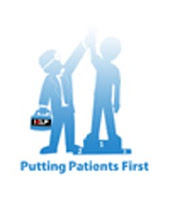1) STRETCH BEFORE GETTING UP
As you sleep, your body shifts blood and warmth from the back muscles to the kidneys, liver, stomach and other organs that need them all night. When you wake up in the morning, the lack of blood flow and movement in your spine makes it vulnerable to strains and sprains. Face it, your back is just not ready for the day.
To reduce the risk of back strain or injury, stretch before you get out of bed. Lying on your back in a relaxed, comfortable position with your legs extended, slowly raise your arms over your head and lay them on the bed. Gently reach with both arms over your head as you comfortably can. Then, add your legs and toes toward the foot of the bed. Remember to stretch only to the point of mild tension, hold the stretch for ten seconds, and then allow your whole body to relax. Repeat this stretch a few times. For your spine, it’s like breakfast in bed.
Shoes play an important role in the comfort of your back. Flat, thin-soled shoes often increase your back discomfort. Look for shoes with good arch supports and a fair amount of soft material under the heel to absorb the shock created when you walk. If you cannot find a shoe that meets these requirements, look into silicone or rubber shoe inserts.
Woman may experience low-back pain when wearing high heeled shoes – and not without reason. As you remember, the low back should have a slight inward curve to it. High-heeled shoes greatly exaggerate this curve and can compress the facet joints of the spine. Wearing a lower heel is usually a better choice for your back. If you work in an environment that requires you to wear high-heeled shoes, wear a pair of athletic shoes to work and then change into your dress shoes at work. Men need to watch out for a similar problem if they wear boots with tall heels.
3) When you have a choice, Push, Don’t Pull.
Moving heavy objects on a cart are, of course, much less strenuous than carrying them, but even with a cart, you can still hurt your back if you’re not careful. As a rule, it is safer to push an object than pull it. When you push, you use the strength of your legs and your back to move the object; you can really get your weight behind it. When you pull, the tendency is to stand flat-footed and to yank, relying solely on your back without using the leg muscles. Also, the back is often in a poor position when pulling, increasing the risk of a sprain. Next time you have a choice, remember to stand tall, lean into the object, use your legs and arms, keep your head up and push.
4) Eat regularly to maintain your energy.
Some people eat the right kinds of food, but they don’t eat frequently enough to maintain their energy level and keep their back muscles working. The most important meal of the day is breakfast, because as you sleep, the energy stored in your liver is depleted by the brain and other organs. When you wake up, about 95 percent of this reserve is gone. Your muscles and the rest of your body are just about to run out of gas, and weakened muscles can quickly become injured muscles. So eat a good breakfast, and back energy they need for the morning.
Now that you’ve started the day with a full tank of gas, you must maintain your energy level throughout the day. The body actually works better and weight control is easier if you eat meals when you are hungry. You probably are conditioned to think that after breakfast, you should not eat until noon. However, your body may actually need the energy at 10:00am; if you wait until noon you are starving your body for two hours and increasing the risk of a fatigue-related injury. This does not necessarily mean that every time you are hungry you should sit down to a full meal. A slice of whole-wheat bread, a piece of fruit, or some low-fat yogurt may work just fine to keep your energy up and tide you over until you can have a complete meal.
Most people still believe in the three-meal diet, but a normal body should actually consume five or six small meals per day rather than two or three large ones. Research has shown that the routine of smaller, more frequent meals is much more effective in meeting the body’s energy needs and reducing the storage of body fat than the traditional three-meal diet. Just be sure that you choose healthy foods for your six small meals.
Source : Medical Book of Remedies - 50 Ways to Ease Back Pain.
Author : Billy Glisan, M.S.



No comments:
Post a Comment